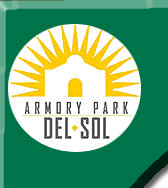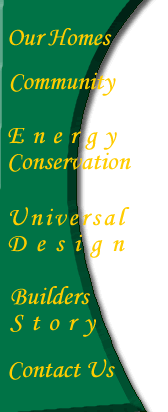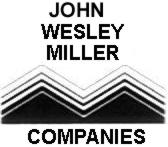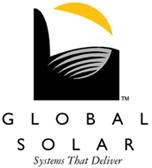


April 6, 2001
Armory Park solar project gets thumbs-up from neighborhoodBy Enric Volante ARIZONA DAILY STAR
John Wesley Miller got an earful two years ago when he proposed building 99 high-tech solar homes in Tucson's historic Armory Park neighborhood.
Neighbors feared the 14-acre project wouldn't blend in. Some worried about unsightly photovoltaic panels. Others found the original housing designs too low and squat.
Last weekend, Miller opened his first few model homes at Armory Park del Sol - and neighbors gave a thumbs up.
Miller, who spent more than 30 years in the herd of builders who leapfrogged away from downtown, faces one of the central city's most challenging infill projects northeast of South Third Avenue and East 16th Street.
"What he's constructing is much, much nicer than what he had originally proposed," said Steve Grede, an architect who reviewed the plans for the Armory Park Historical Zoning Advisory Board, which recommended changes in building style.
"All of our recommendations were listened to and followed,'' Grede said. "He's just done a marvelous job of redesigning and making forms and designs that really fit in."
Miller touted the project as high-tech, old-style homes, and neighborhood groups and city officials got behind it as a key to downtown revitalization.
But some neighbors grew wary again as workers laid the block walls on the first three models.
"As they started to go up, they just looked awful, and some looked out of proportion,'' recalled Nadine Rudd, a member of the advisory board who joined other neighbors in touring the new homes last week.
"But when they got finished, they looked much, much better. I think we're very pleased by what we see."
Especially considering the alternatives: Apartment-style student housing was among the higher-density proposals that floated and sank under previous owners or builders.
Still to be seen is whether Miller, a longtime solar-energy advocate who helped build Oracle's offbeat Biosphere 2 project, can turn a decent profit in a housing industry where time is money.
He struck a deal to buy the site from owner Alan Levine around November 1999 on a handshake and a napkin during a meeting at the Rincon Market.
With the clock ticking, the average development of conventional, cookie-cutter homes could have models ready in a year.
But it took Miller more than two years, what with seeking permit approvals and variances from the city's building standards, meeting with neighbors and redesigning the homes. He also partnered with Tucson Electric Power's Global Solar Energy division.
"It's part of a dream. This was not a bottom-line deal for me," he explained this week.
He estimated his profit margin is "probably half" that of a typical residential development.
Miller has not revealed the precise price mix of single-family homes, but he said he's making a sweetheart deal for Primavera Builders to construct nine or 10 of the 99 homes.
The nonprofit group specializes in making homes affordable to low-income or working-class families.
Still, rising costs mean buyers will pay about $110,000 for the least expensive homes - not the $90,000 he originally announced. They'll range up to $300,000.
Miller still wants the city to waive building fees of $1,200 to $1,500 for the rest of his homes over the next two to three years. But the City Council has not decided whether to lift a cap of $25,000 in waived fees per infill project.
The all-electric homes feature photovoltaic panels linked to the power grid to offset the owner's overall TEP bill, tankless water heating, thermal mass concrete walls with exterior insulation and other energy-saving features.
Energy bills should be only one-quarter to one-third those of conventional homes - as low as 98 cents a day on average for some homes, Miller said.
Grede said inner-city building is challenging because traditionally it costs more per square foot to build new homes than it does to rebuild existing property.
Miller "is to be commended for taking on a project like this," Grede said.




